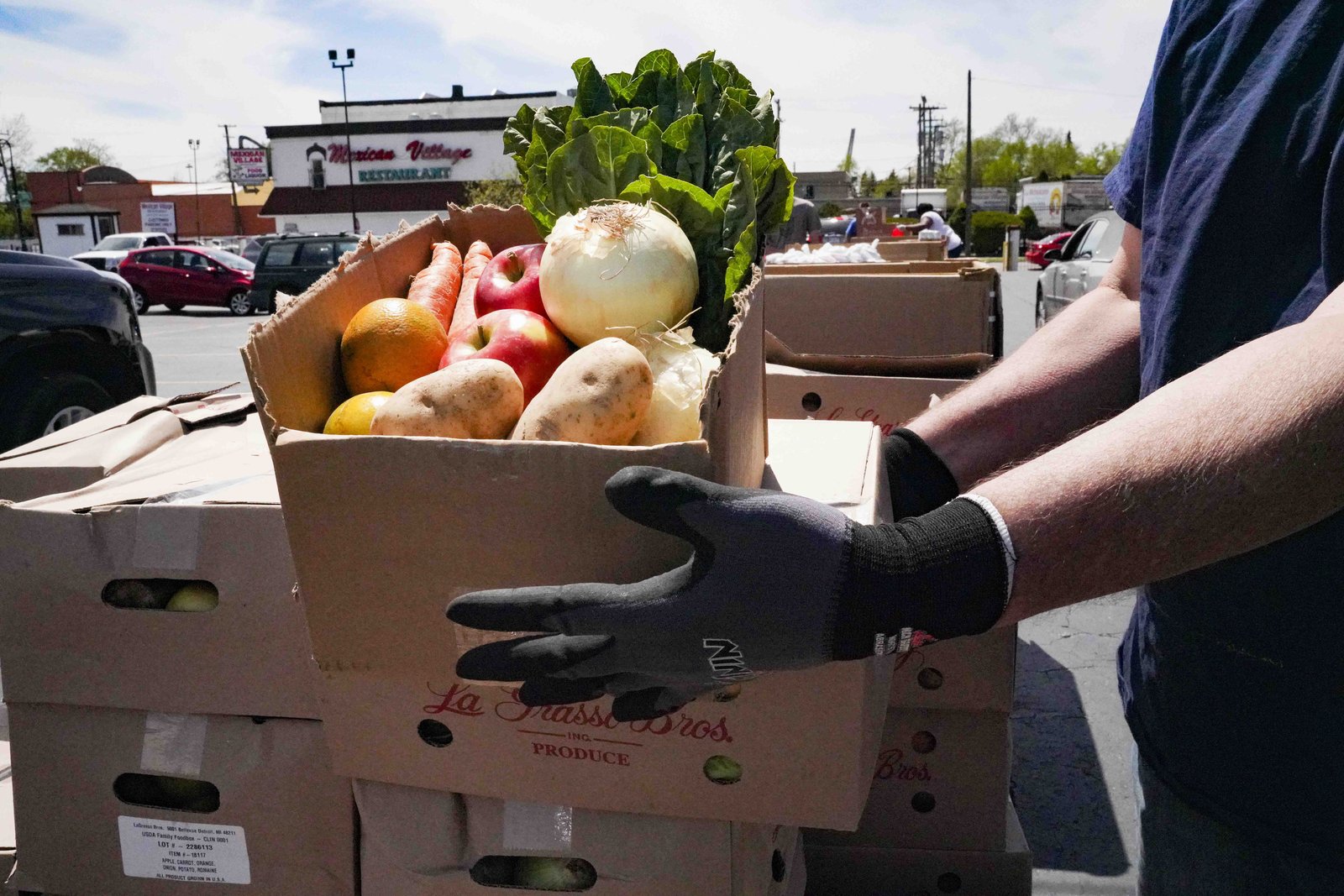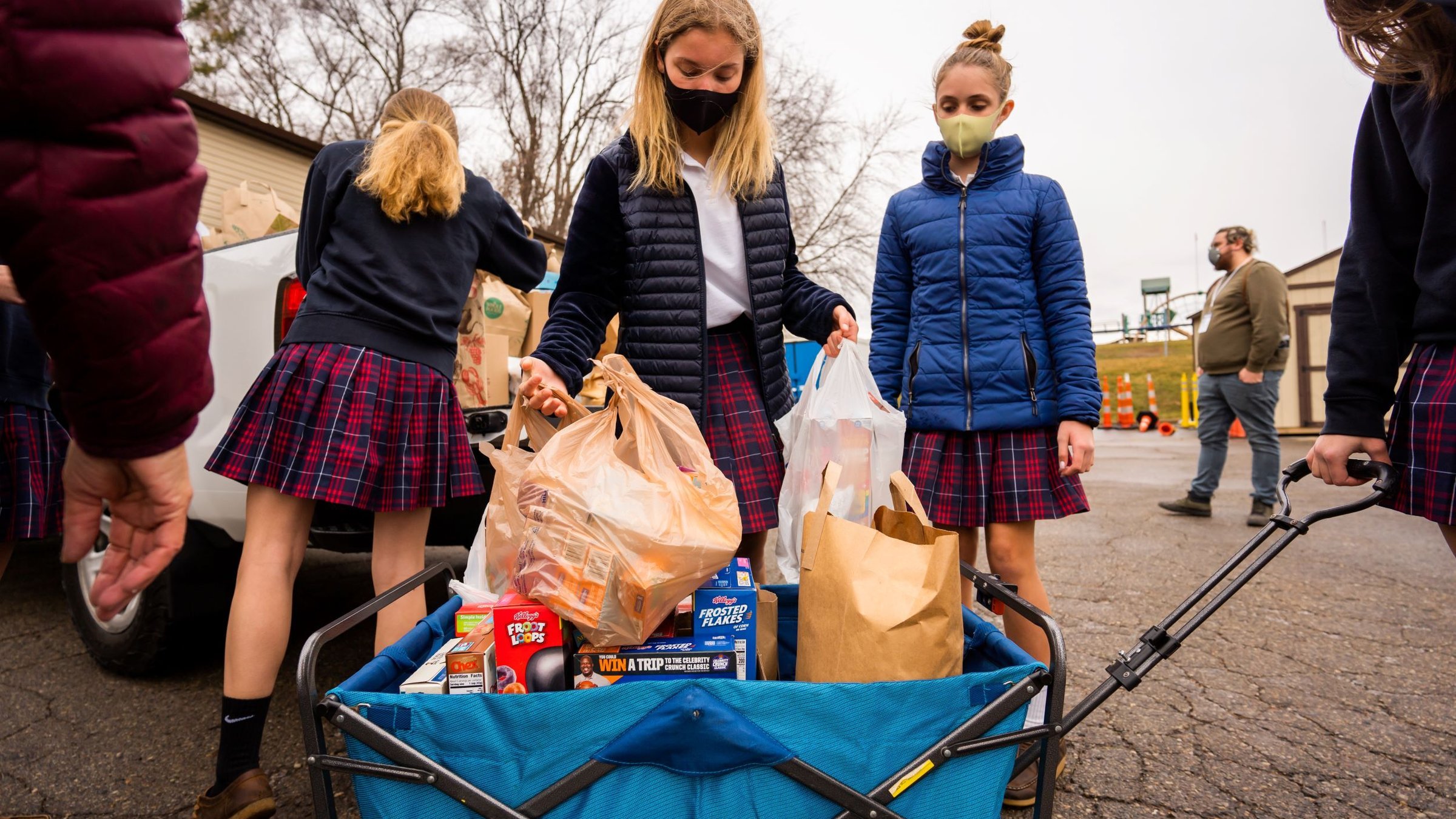As price of food rises at its fastest pace in 40 years, nonprofits that feed the hungry say they're feeling the pinch as need remains high
DETROIT — If you go to the grocery store these days, you might get sticker shock at the price of a gallon of milk.
Can you imagine your pocketbook's pain if you needed to buy 250,000 gallons?
Local food aid ministries, including food banks and parish-based pantries that provide critical lifelines for low-income families, seniors and those experiencing economic hardship, are "absolutely" feeling the pinch of inflation as food prices rise at their fastest pace in nearly 40 years, those who spoke to Detroit Catholic say.
Granted, most aren't shopping at the local supermarket, but the impact of rising prices is there.
“Inflation is definitely having an effect in terms of our costs,” said Stacy Averill, vice president of community giving and public relations for Detroit-based Gleaners Community Food Bank. “Two of our largest costs as an organization are food and staffing. From the food perspective, we are definitely seeing substantial increases in the cost of items that we purchase and make available through our distribution.”

The U.S. consumer price index, which measures the impact of inflation across a range of categories, rose 7.9% in February 2022, the steepest price gain since 1982. Food prices, which are among the most volatile commodities, rose an average of 3.9% in 2021.
So far, ministries such as Gleaners have been able to keep pace with demand for assistance — which remains high two years after the start of the COVID-19 pandemic.
As one of the largest food banks in Metro Detroit, Gleaners purchases food in bulk to distribute to more than 660 soup kitchens, food pantries, shelters and schools in southeast Michigan, with more than 64 million pounds of food delivered in 2020. Most of the food Gleaners distributes is given away, either for free or at a low service fee, to direct aid providers, though Gleaners does distribute a small percentage of food itself.
Because of its wide network of partners, Gleaners is able to purchase food in bulk at discounted prices from local farms, retailers and wholesalers, but those prices have increased dramatically in the past two years, Averill said.
“We're seeing substantial cost increases in items, I would say between 10% and 25% compared to pre-pandemic prices,” Averill said. “That's across the board from food staples like fresh produce, but also things like canned fruits and vegetables, frozen chicken and fresh milk. The increases vary by the item.”

For instance, Averill said, Gleaners projects to spend almost $500,000 more this year on fresh milk, and is already spending more than it budgeted on produce this fiscal year.
When the pandemic began, food banks, shelters and soup kitchens received an influx of federal, state and private aid in the form of monetary donations, grant programs and direct food donations, but two years after the height of the crisis, much of that initial burst of support has dried up, Averill said, causing nonprofits like Gleaners to rely more heavily on their own budgets to continue meeting an elevated demand for food.
“In the last year or so, the amount of food donations we've received have dropped substantially,” Averill said. “Right now, we're having to buy more to offset the drop in food donations at a time when prices are really high. It is having a direct impact on our work in continuing to try and purchase the food that we need for our distributions and for our community.”
Even organizations that are more insulated from direct food price increases, such as Oak Park-based Forgotten Harvest, are feeling the impact of inflation in other ways.
While both Gleaners and Forgotten Harvest provide food free of charge to local food pantries and soup kitchens, Forgotten Harvest’s organizational model relies on rescuing and redistributing perishable food from local grocers, restaurants and farms that otherwise would go to waste.

But while Forgotten Harvest receives the food it gives away for free, that doesn’t mean there aren’t costs for the nonprofit.
“We typically receive all of our food free of charge, but fuel cost are one of the biggest we have, and obviously the price of diesel gas, diesel fuel and regular gasoline and petrol are increasing,” said Christopher Ivey, director of marketing and communications for Forgotten Harvest. “We're definitely seeing the impact of that.”
Last year, Forgotten Harvest rescued and redistributed 51.2 million pounds of food in southeast Michigan, coordinating with more than 800 food donor organizations and 180 distribution sites to move, store, package and distribute perishable items to more than 1 million people in need.
That’s a lot of trucks, a lot of volunteers and a lot of energy. With the average price of diesel fuel approaching $5 per gallon — an all-time high — it’s also a lot of money.
“It's not a food cost issue so much as it's just the transportation costs of getting the food to us,” Ivey said. “And then obviously, like everyone else, we’re running a bit short staffed. So on top of that, we've had to pay overtime. When our drivers are out sick, we have to get a temporary driver, so then we incur costs there.”
During the pandemic, many large corporations and organizations that would normally send teams of volunteers to help pack, organize, sort and distribute food pulled back because of safety concerns, Averill said, leaving organizations like Gleaners and Forgotten Harvest scrambling to fill orders and leaning on staff — and in some cases overtime — to fill the void.

While both organizations have implemented protocols to ensure volunteers’ safety, and some volunteers have begun to return, both Ivey and Averill said their organizations’ biggest need is twofold: manpower and monetary donations.
“That flexibility (of monetary donations) is extremely helpful as an organization, so that we know we have the funds to purchase food even if prices go up,” Averill said. “The other thing we need is volunteers.”
For direct-service food pantries and soup kitchens, the need remains high. Demand for food assistance isn't at the extreme levels seen at the start of the pandemic, but it's still higher than it was before the pandemic — likely as a direct or indirect result of inflation.
Adam Perry, director of the Center for the Works of Mercy in Detroit, which is run by Catholic Charities of Southeast Michigan, said the center’s food pantry has experienced an uptick in clients since opening in last year.

“I would surmise a part of that is because of inflation,” Perry said. “When people go to the grocery store, their food stamps don’t go as far because grocery costs are higher. The unfortunate part of inflation for us is that we actually need to serve more people, not less.”
Perry said the Mercy Food Pantry leverages Gleaners’ bulk purchasing power to buy food at a discounted rate, and so far hasn’t experienced higher prices — a factor Perry attributes to Gleaners’ resolve to absorb, rather than pass along, much of the increase in costs to its partner agencies.
“That's huge for us," Perry said. "They’re doing a great job trying to avoid pushing that cost to the distributors. We receive grants (to purchase food) through organizations like the United Way, but we’re on a budget through those grants.”
Should that cost increase, Perry said, Catholic Charities would likely turn to parishes and Catholic schools — which already have been generous with food and clothing drives — to fill any gaps.
“Parishes have been excellent in asking us, ‘What do you need? How can we do an extra drive this year?’” Perry said. “It’s been hard with COVID. I think that’s created more of a partnership and a synergy between the parishes and the organizations that are helping. Those things make a big impact, and we appreciate them.”
How to help
To make a donation of food, a financial contribution, or to volunteer, visit the websites below.









